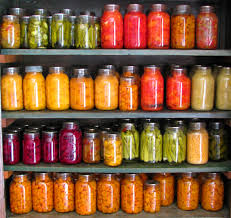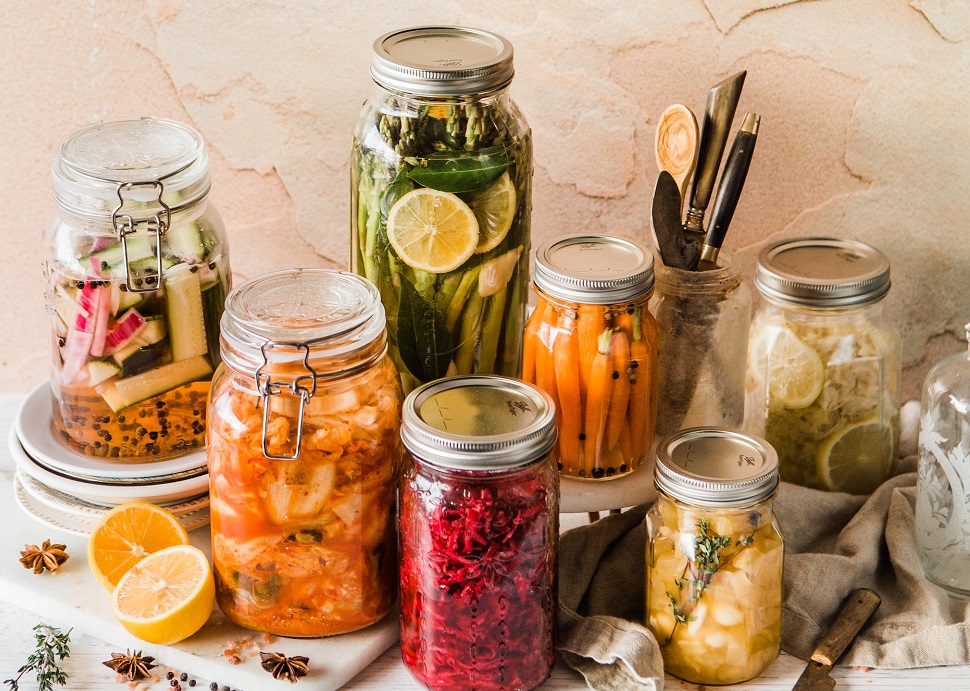
Safe Canning Practices – Water Bath or Pressure?
Canning has been around for centuries and is one of the most popular food preservation techniques today. It provides a way for you to enjoy the tastes of summer in any season. Whether you love whole fruits and vegetables, pickles, or jams, canning ensures that seasonal foods can be consumed long after the harvest is complete. That is why it is important to use safe canning practices!
However, there is one thing to be aware of. The safety of canned items relies on using the right canning methods. A common question for those new to canning is whether the best option is a water bath or a pressure canner. Both options have merits as well as drawbacks. Understanding the strengths and weaknesses and when to use each is essential for amazing home canning.
Water Bath Canning
Water bath canning (or boiling water canning) is typically best used for highly acidic foods, such as tomato products, pickles, jellies, jams, and fruits. The process involves taking a sealed jar and submerging it in boiling water for some time. The higher acidity in these items creates an environment where it’s hard for bacteria like Clostridium botulinum to survive. This is why it’s a safe option for these specific foods.
Another perk of water bath canning is that it’s very easy to do. There’s no need for a lot of specialized equipment. This makes it ideal for beginners or those with a small kitchen and a lack of resources.
At the same time, specific rules need to be followed at all times with water bath canning to ensure your total safety. Proper canning jars with two-piece lids made for this exact purpose should be used. In addition, all jars need to be well sterilized before they are filled with food. This involves either running them through a dishwasher or boiling the lids and jars in water.
In addition, it’s important to only follow tested and approved recipes from reliable sources. Choosing to change proportions or ingredients could create a different acidity and potentially create safety issues. Finally, make sure you process the jars for the recommended time in the recipe. Adjust for altitude as needed for your location.
Pressure Canning
The other main method of canning is called pressure canning. It is used for foods with a low acidity, such as seafood, poultry, meats, and vegetables. With foods that have a pH of 4.6 or higher, an environment is created where harmful bacteria can thrive unless proper processing is done.
With pressure canning, you use a special pressure canner to heat the foods to a temperature higher than that of boiling water. This kills off any spores and bacteria in the food. This is extremely important to avoid botulism poisoning, which can be fatal and is related to toxins from Clostridium botulinum.
The biggest advantage of pressure canning is that it can be used for the safe preservation of a wide range of foods. Unlike water bath canning, pressure canning is useful for low-acid foods without adding additional acid into the mix. This results in higher safety and quality. Pressure canning also preserves the texture and nutrition of foods better than other methods, which makes it great for meat and vegetables.
However, there is special equipment needed for pressure canning. A pressure canner with a tight lid and a pressure gauge will be needed. You’ll also want to have a good deal of attention to detail to ensure safety while going through this process.
Certain guidelines need to be followed to safely pressure can foods. Choose a pressure canner of an appropriate size and make sure it’s working well. The canning jars you use should be designed for pressure canning. Make sure you inspect them for cracks or chips that could cause issues. Always use testing and approved recipes and make sure you follow all instructions, including processing times and pressures for altitude.
The pressure canner should be vented before pressurizing to remove trapped air. You also want to monitor the processing time and pressure carefully as the canning occurs. Once it’s done, let the pressure canner cool down before you open it. This prevents pressure changes that could lead to spoiled food.
Determining Acidity for Proper Canning Techniques
Now that you know how acidity factors into canning, you might be wondering how to determine the pH of foods that you wish to can. pH strips are a great way to ensure you choose the right canning solution. Make sure you choose a reliable brand known for accurate pH readings. Beyond that, use the steps below to handle the process and move forward.
- Calibrate – Use the calibration solution to make sure your pH strips are accurate.
- Measure – Determine the acidity of a food using a pH strip. Dip it into the food to get a reading.
- Analyze – If the food has a pH of below 4.6, move forward with boiling water canning. If it’s higher, you can use a pressure canner.
Remember that some variations in pH are normal when moving between batches of the same food. This is why you should be measuring the pH for every batch to be sure you follow safe practices. All in all, pH strips are a great tool for home canning. They are simple and efficient to use to determine the acidity of various foods you wish to preserve and eat at another time.
Safe Canning Made Easy with the Help of Stoney Creek Farm
Safe canning processes are essential to preserve food at home effectively. Whether you choose a water bath canner for foods with high acidity or a pressure canner for other foods, understanding the proper techniques is critical to ensure quality and safety.
For those who want to learn more and refine their canning skills, consider attending one of the upcoming in-person canning classes at Stoney Creek Farm. Available in April, May, June, and July, the classes have hands-on instruction in canning foods with details on both water bath canning and pressure canning methods. Once you master these techniques, you’ll be able to enjoy delicious canned food while enjoying a more sustainable lifestyle.
Don’t live in Middle Tennessee? We have the same class online: ONLINE CANNING CLASS You have unlimited access to the online class, so you can do a refresher class anytime!


